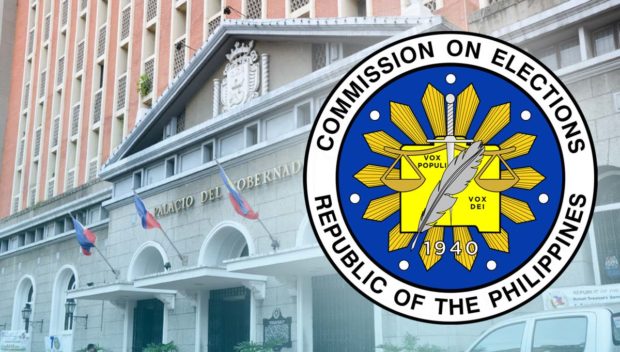
Comelec headquarters in Intramuros, Manila.
MANILA, Philippines —A tech executive has proposed the use of blockchain technology in the canvassing of votes for the next automated polls, promising a more secure, transparent and “tamper-proof” electoral process.
At one of the sessions during the Commission on Elections’ (Comelec) first National Election Summit last week, Paul Soliman, CEO of blockchain development firm BayaniChain, broached the idea of a blockchain-based election using a “tokenized electoral framework protocol.”
“Blockchain creates an unalterable ledger of all votes cast, making it more difficult for anyone to manipulate the elections,” he said.
Under Soliman’s proposed framework, a voter who has just cast his vote gets what he calls an “election nonfungible tokens,” or an encrypted unique code, that can be validated by the voter through a “decentralized” app that will track the transmission of one’s vote.
If there’s an attempt to alter a certain vote during transmission, Soliman explained, it will be “algorithmically” flagged by “third party validators” in the blockchain network. These validators can be any designated entity, such as poll watchdogs or other government agencies, he said.
Every vote will be “replicated” from the vote-counting machine all the way to the canvassing from the local, municipal, provincial and the national. Each level will then be verified by the third party validators.
Consensus
“It’s not complex … Is this transaction valid algorithmically? If [one] validator says yes, and the [other] validator says yes, then there’s a consensus. And when the consensus says everything is okay, that’s the only time we count the vote,” said Soliman, who also leads other tech firms.
Soliman noted that this blockchain-based electoral system is “immutable” and will “increase voter confidence, improve security and reduce cost.”
The framework will utilize a “hybrid” model using both public and private blockchains so that every ballot can be subjected to audit while remaining confidential.
According to Soliman, public blockchains are “open to anyone and are maintained by a decentralized network of nodes.” Private blockchains, on the other hand, are “maintained by a centralized organization and have restricted access” often used for privacy and control purposes, such as financial transactions and medical records.
But Comelec Chair George Garcia is not totally sold on the idea.
Advanced technology
While he envisions a “more advanced” system for the 2025 elections, Garcia said that the public needs to learn how blockchains work before the government taps this kind of technology.
“Even if we use the most advanced technology, but the public does not understand it, they might just end up scared to vote, or they might just question the process,” he told reporters.
“More than the technology, the integrity, credibility and transparency of the elections should always be guaranteed,” he added.
According to Investopedia, blockchain is a type of shared database or ledger, which stores data in a block that are linked together.
“As new data comes in, it is entered into a fresh block. Once the block is filled with data, it is chained onto the previous block, which makes the data chained together,” it said.
The poll body chief has also raised the possibility of using other technologies, such as the direct recording electronic system that uses a touchscreen device to cast votes, in future elections.